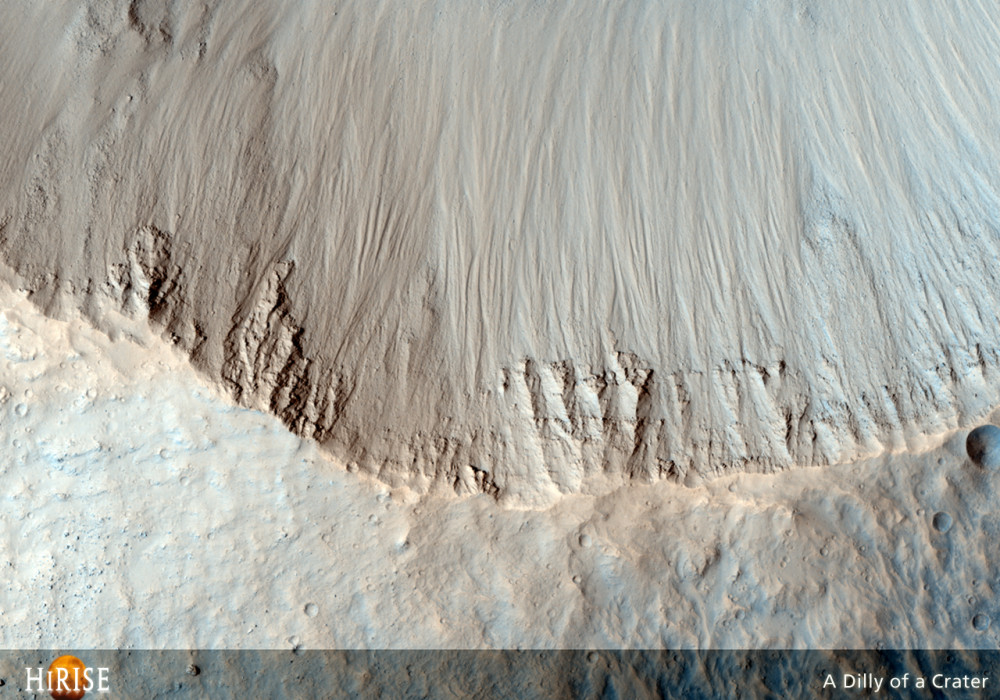This image covers the primary cavity of the distinctive rayed crater Dilly. Dilly is what is commonly referred to as a butterfly crater. This colloquial name refers to the asymmetry of the ejecta giving the appearance of wings around an elliptical cavity, and hence, the overall appearance of a butterfly. This asymmetry is captured quite nicely in the full-length HiRISE image (see the JP2 product options at the right).
The butterfly appearance and elliptical cavity of Dilly (approximately 2 x 2.3 kilometers in diameter) are distinctive clues indicating that the crater formed from a low-angle impact (< 45 degrees), likely from the southwest.
In addition to being a butterfly crater, Dilly is one of the smallest of the large rayed crater systems discovered in THEMIS nighttime infrared (temperature) images. Dilly, like its rayed counterparts such as Zunil, Gratteri, Tomini, Zumba, and the recently discovered unnamed crater seen in PSP_003611_1970 , possesses distinctive rays (i.e., spoke-like and far-traversing radial ejecta features) that are most readily viewed in THEMIS images. Crater rays are distinctive in the infrared because they are comprised of both dust and coarse, rocky materials, which are contrasted as cold (dark) and warm (bright) respectively. Because rays are ephemeral features, they are noted by scientists as a tell-tale sign of a fresh or well-preserved crater.
In the image, we can also observe that Dilly possesses a very distinctive light-toned south-west-trending streak that indicates modification by wind. Light-toned dunes are also visible in the bottom of the crater. Written by: Livio L.Tornabene (29 February 2008)
This is a stereo pair with PSP_010203_1935 .
More info and image formats at http://hirise.lpl.arizona.edu/PSP_006841_1935
Image: NASA/JPL/University of Arizona
